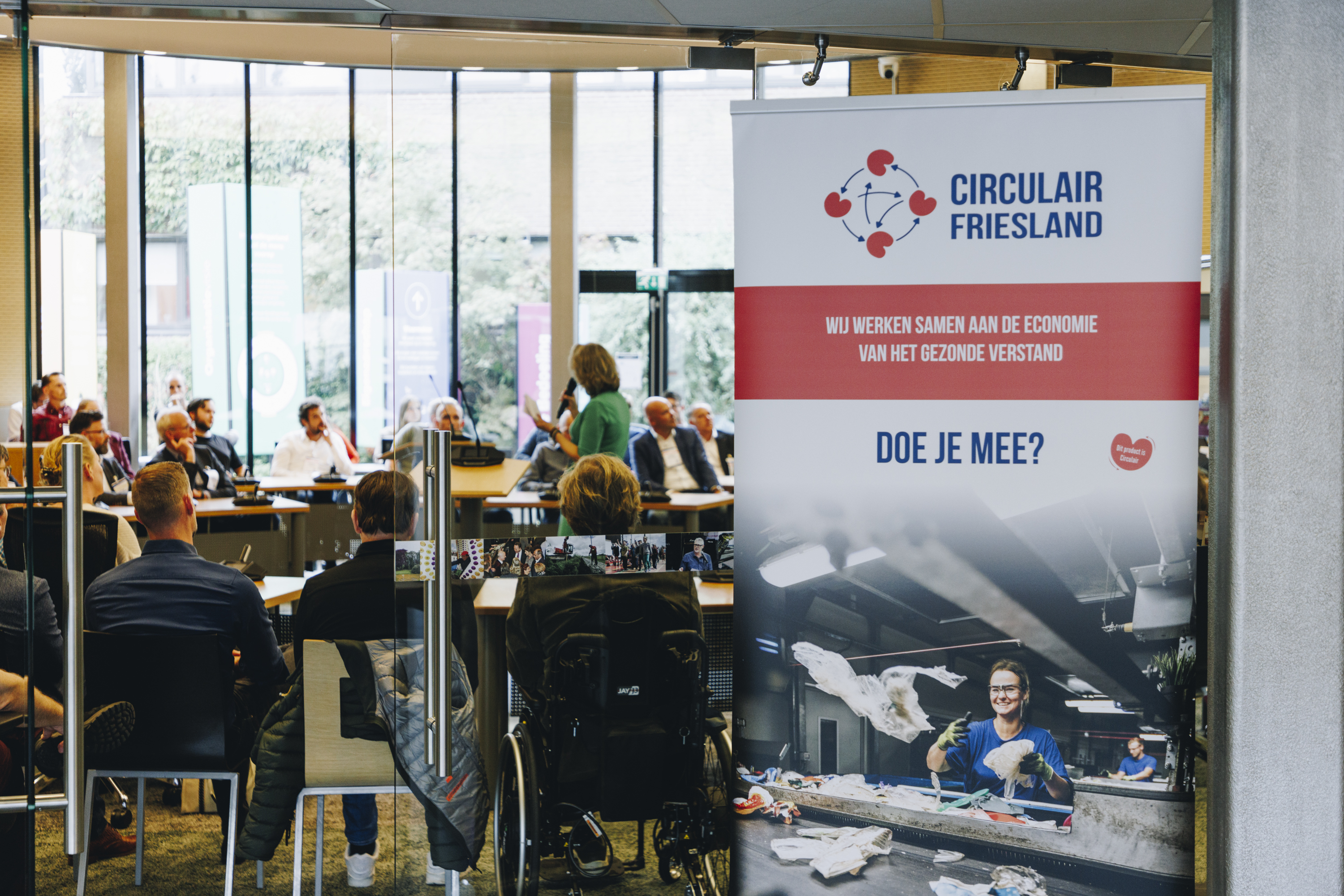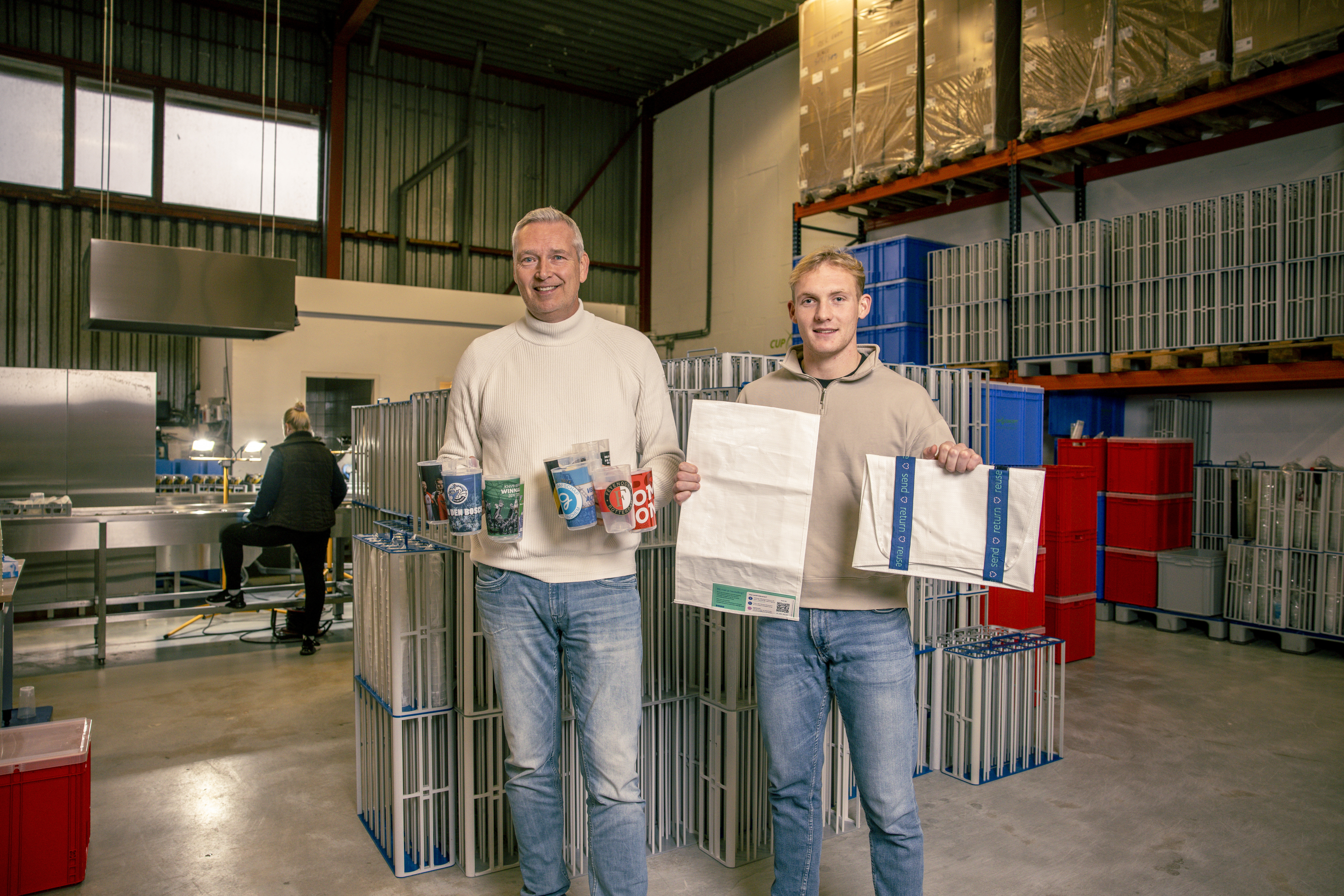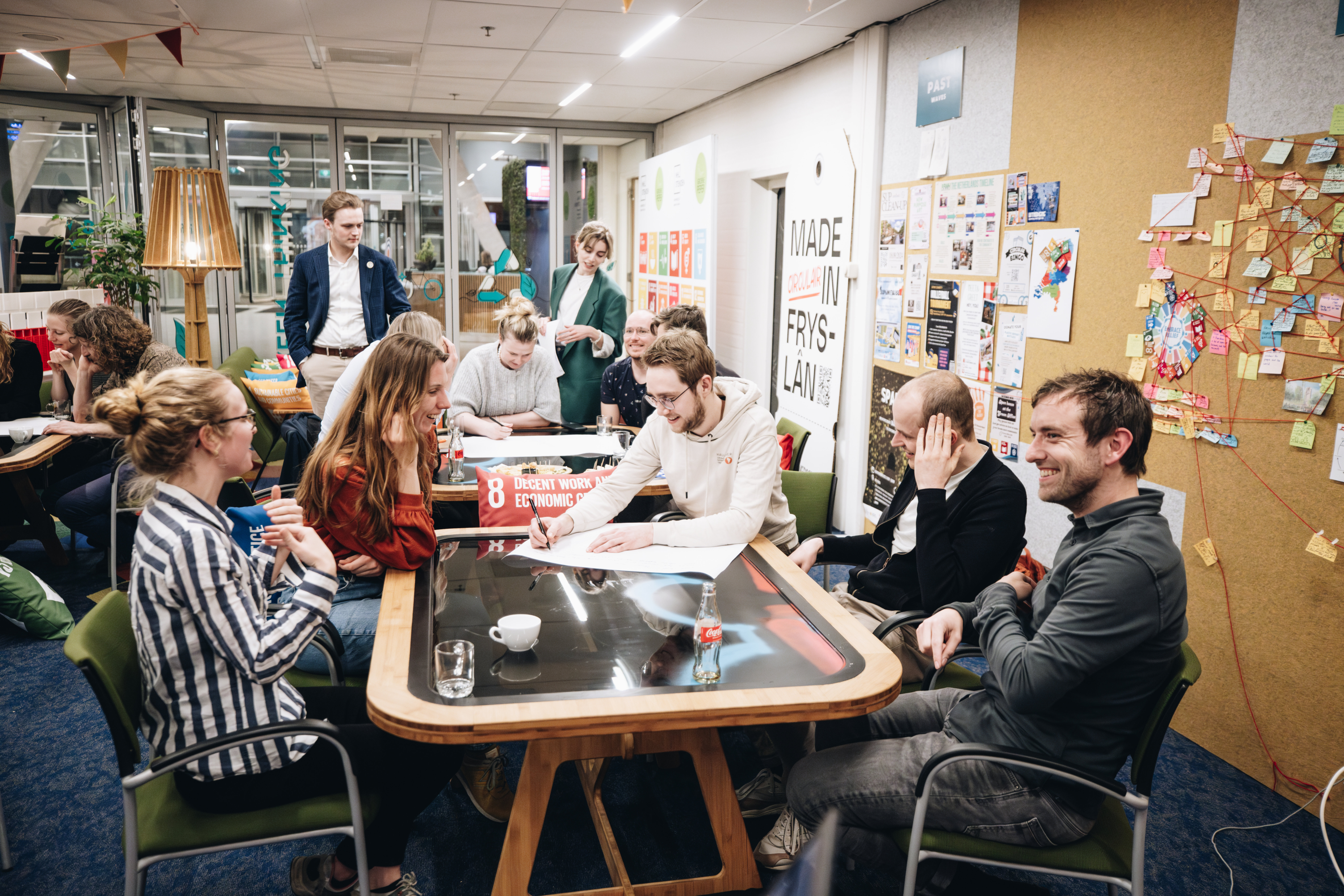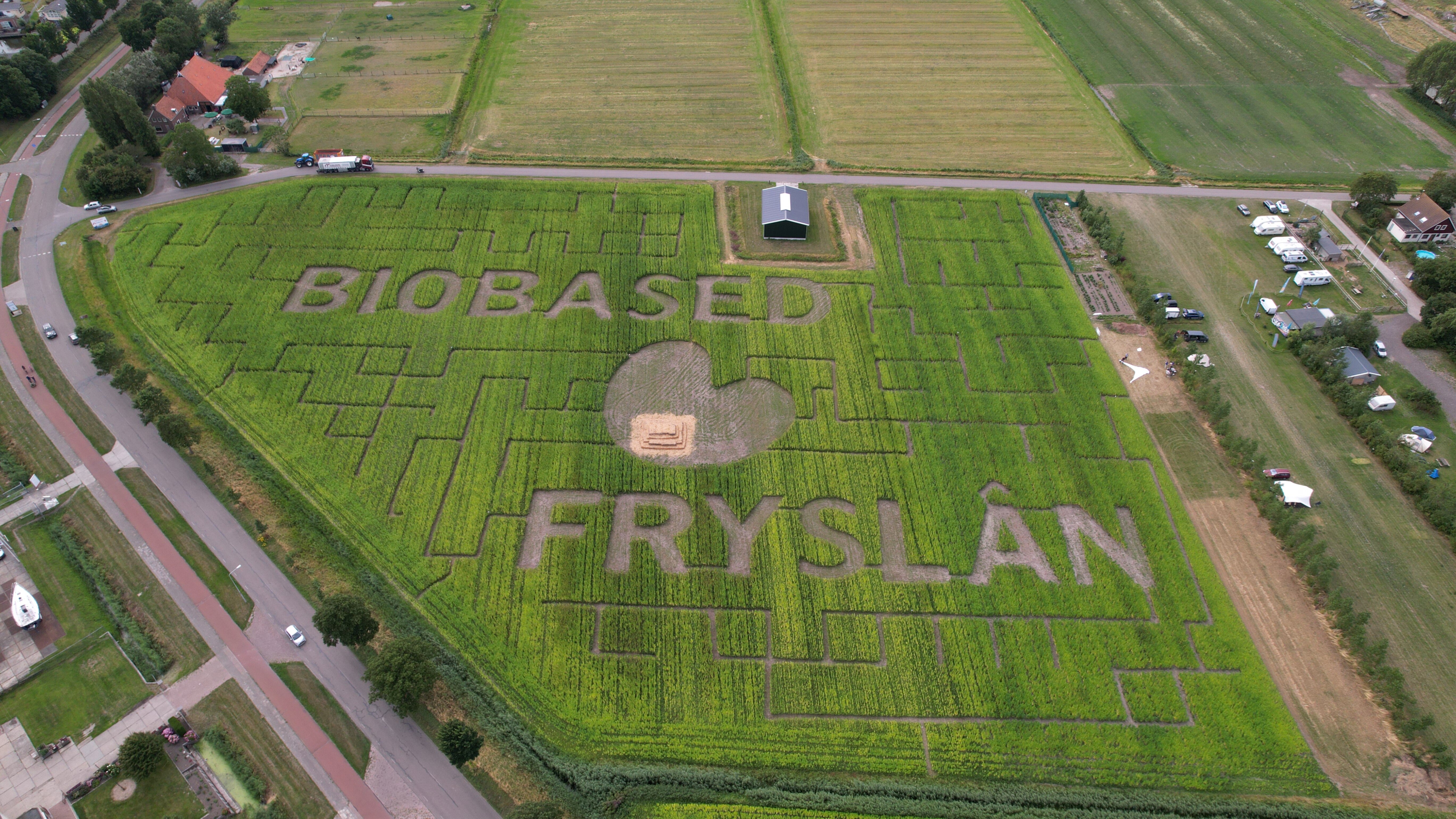Accelerating the transition
To achieve a truly circular economy, Friesland must address the existing circularity gap by focusing on both successes and areas requiring more attention. Key indicators reveal where progress is being made and where challenges remain. At the same time, the region must stay attuned to the impact of ongoing initiatives, understanding the short, medium, and long-term effects these tipping points will have. Finally, it’s essential to define the roles of all stakeholders in closing the gap—ensuring that collective efforts drive tangible and lasting change toward a more sustainable future.
The gap today¶
The Netherlands has set two landmark targets for the circular economy: a 50% reduction in primary raw material use by 2030 and a fully circular economy by 2050. Reaching these goals will depend not just on European and national policy, but on the active leadership of regions—where implementation, innovation, and collaboration truly take shape. Friesland is committed to being a frontrunner in this transition. But the scale of ambition means that many shifts must happen simultaneously—across sectors, systems, and actors. It’s not about isolated fixes, but about coordinated, parallel efforts that together drive system-wide change.
Key indicators already highlight the urgency. Reducing Friesland’s material footprint is a priority for aligning with long-term circular targets, but carbon emissions, especially scope 3 emissions primarily linked to production and supply chains abroad, are falling behind. Tackling these emissions is essential from a climate perspective. Meanwhile, waste generation remains high (as in many western regions), underscoring the need to keep products in use longer and rethink linear consumption patterns.
Yet several important aspects of the circular economy remain poorly measured or monitored—from freshwater use to circular procurement, the integration of circular economy principles into education and training, and the public health impacts of circular practices. These data gaps are vital for achieving a holistic transition to a circular economy, ensuring that all dimensions are properly addressed. The good news is that identifying these blind spots is a critical step forward. With a clearer understanding of the gaps, Friesland is now in a stronger position to tackle them through better monitoring, focused action, and shared learning.
What lies ahead¶
Friesland’s circular transition is not only defined by long-term ambition but by a clear roadmap of tangible efforts already underway. To close the circularity gap, the region is leveraging high-impact tipping points and sector-specific clusters where change is most feasible and impactful—and most needed. These strategic areas, supported by practical programs and cross-sector collaboration, are expected to drive systemic transformation in the years ahead.
Four key focus areas are already expected to shape Friesland’s trajectory toward a more circular and resilient regional economy:
1. Circular procurement as a market driver¶
Friesland’s public sector holds unique influence: its annual €1.5 billion in procurement spending represents a major lever for creating circular demand. Through programs like Circular Commissioning & Procurement by Frisian Governments and Circular Business Operations, public entities are embedding circular criteria into purchasing policies—generating demand for sustainable goods and services and catalyzing market transformation.
By 2035, all public procurement in Friesland is intended to be 100% circular. This will not only accelerate innovation among suppliers but also establish long-term employment opportunities and ensure that circularity becomes a core principle of public value creation.
Projected impact:
- Shift from pilot projects to system-wide adoption of circular procurement standards
- Stronger circular supply chains across the region

2. Scaling circular entrepreneurship¶
Circular entrepreneurship is central to building a future-proof economy in Friesland. Through support structures like CIRCO tracks and the Ambition Table for Innovation and Financing, the region is helping businesses identify circular opportunities, develop regenerative business models, and access relevant financial and knowledge networks.
From product-as-a-service models to reverse logistics, local companies are increasingly finding new ways to reduce waste, close resource loops, and retain value. As these approaches scale, Friesland aims to become a hotspot for circular innovation in Northern Europe.
Projected impact:
- Widespread SME adoption of circular business models
- Growth in green jobs
- New circular value chains emerging regionally

Photo: Menno de Boer
3. Embedding circularity into education¶
SPARK the Movement has become the backbone of circular education in the region. Spanning all educational levels and involving schools, governments, and businesses, SPARK embeds sustainability into curricula while fostering regional collaboration.
By training today’s workforce and preparing future changemakers, the program ensures that circular thinking becomes second nature in Friesland’s next generation of professionals.
Projected impact:
- Circular principles mainstreamed in education
- Stronger talent pipelines for circular sectors
- Increased innovation through student–business collaboration

4. Sectoral focus: circular and biobased construction (value chains)¶
Friesland is applying a cluster-based approach to accelerate change in sectors where circularity can have outsized impact. One major example is construction, where conventional materials contribute significantly to carbon emissions. Through initiatives like Friesland Builds Circular, the region promotes biobased construction, supports local value chains, and manages regional participation in national programs such as the National Biobased Building Programme (NABB).

Other clusters—such as water use, plastics, agriculture, and tourism—are also evolving through focused programs and partnerships. For example, the National Test Centre for Circular Plastics and European collaborations like FrontSH1P are positioning Friesland as a leader in plastic circularity.
Projected impact:
- Biobased materials becoming standard in construction
- Decreased carbon intensity
- Development and adoption of circularity standards across key sectors such as agriculture, water, plastics, and tourism—ensuring consistent practices and measurable progress
- Together, these focus areas represent more than isolated projects—they are interconnected strategies forming the foundation of Friesland’s circular transition. By acting on these high-leverage points, the region is not only addressing immediate challenges but shaping a long-term vision of economic and environmental resilience.
Closing the gap¶
While the circularity gap remains substantial, Friesland has laid a strong organisational foundation to close it—yet this foundation is not a finished structure, but rather a solid starting point that must be further developed and expanded. Built on collaborative partnerships, deep local engagement, and a clear regional vision, this structure provides the scaffolding needed to accelerate aligned action and foster innovation.
Crucially, Friesland is not starting from scratch. The region can build upon a growing body of successful circular initiatives and pilot projects that have already proven their value in practice. These examples offer concrete models that can be scaled up or adapted to new sectors and regions. The conditions for doing so are promising: trust, experience, and cooperation are already in place, creating fertile ground for growth.
Further innovation & development¶
Friesland aims to continue investing in the research, development, and scaling of high-value circular materials and processes. While general barriers to innovation—such as high upfront costs, limited funding, and slow adoption of new technologies—remain relevant across many regions, Friesland has shown an ability to partly overcome these through its distinctive regional approach. Strong public-private cooperation, a culture of practical experimentation, and targeted educational initiatives have created fertile ground for innovation. This context not only helps to mitigate typical obstacles but also provides a high potential for accelerating future circular development. Building on this momentum, targeted financial incentives, regulatory support, and shared innovation hubs can further unlock and scale up successful solutions.
One key area where there is high potential for change is the significant share of Friesland’s material footprint that comes from imported goods and resources. Reducing this dependency offers both environmental and economic opportunities. By focusing on local innovation, businesses in the region can identify where resource efficiency gains can be made through near-shoring—collaborating with neighbouring provinces—or onshoring, by strengthening local industrial capacity. These strategies not only reduce emissions from transport and logistics but also unlock added value by making smarter use of local skills, materials, and by-products. Examples include scaling up biobased material production for construction, as well as expanding nutrient recovery from wastewater to offset reliance on imported fertilisers. Supporting these types of initiatives can help build more self-sufficient value chains, foster circular innovation, and stimulate local economic development.
Additionally, education plays a key role in ensuring that the next generation of professionals is equipped with circular economy skills. However, simply integrating circularity into curricula is not enough. Training programs should aim to be practical, industry-driven, and aligned with real-world challenges, ensuring that graduates can apply circular principles directly in their careers.
Maintain strong government collaboration¶
Collaboration with national and European governments is crucial to creating a level playing field—for instance, by enabling true pricing mechanisms. Equally important are clear incentives, accountability, and effective enforcement to drive meaningful progress. Additionally, strengthening networks of frontrunner regions is essential to demonstrate the tangible impact regions can have in the circular transition, while facilitating the exchange of best practices, knowledge, and innovative solutions.
Local governments are encouraged to lead by example through stronger circular procurement, ensuring that public spending supports circular materials and services—particularly those that promote higher R-strategies. To create a more robust circular economy, minimum standards should be set for circular procurement, particularly in key sectors or materials where Friesland’s businesses have leverage, such as biobased materials, locally sourced food, and feed.
Attract investment & internationalisation¶
Attracting private investment is crucial to scaling Friesland’s circular economy. This requires targeted incentives, risk-sharing mechanisms, and clear regulatory support to make circular business models financially viable. While these barriers to innovation are common in many regions, Friesland’s particular challenge lies in the small scale of its businesses. With a large proportion of SMEs—many of which are relatively small in size—Friesland faces a lack of large companies that typically serve as pull factors for innovation.
Scaling circular value chains across Friesland’s more than 20,000 SMEs[1] requires fostering collaboration and building stronger networks within the region. By encouraging partnerships among SMEs, larger firms (where possible), and research institutions, Friesland can overcome these challenges and drive widespread adoption of circular practices. Supporting these businesses with dedicated resources and tailored solutions will be essential to achieving significant growth and impact in the circular economy.
Strengthen circular monitoring¶
Friesland is dedicated to going beyond simply monitoring circular economy indicators—it aims to actively bridge data gaps, improve measurement methods, and translate insights into action. Without accurate and comprehensive data, policies and investments risk being misaligned with real needs. The set of indicators presented in this report—covering material use, environmental impact, economic performance, and wellbeing—provides a strong foundation for monitoring progress in the coming decades.
However, important data gaps remain, particularly in the areas of circular procurement, education and health impacts as well as overarching indicators reflecting the progress of the transition in the water sector. Closing these gaps is critical to ensure that indicators reflect real-world dynamics and support more effective decision-making. This integrated approach makes it possible to assess trade-offs over time; for example, increases in material consumption may not necessarily lead to gains in wellbeing or economic performance.
To make monitoring truly effective, it must be more than a top-down reporting exercise. Indicators need to be actively owned across different levels of decision-making and embedded into real-world processes—from regional strategies to project design and procurement. This requires translating high-level indicators into specific, actionable goals that guide daily choices in both the public and private sectors.
Looking ahead, it is essential to define new, clear goals for 2030 and beyond. These forward-looking targets will provide direction and ambition, while ensuring that monitoring systems remain relevant and aligned with long-term transitions. Importantly, circularity goals—such as doubling the circularity rate—should be seen as outcomes of more fundamental targets: increasing the use of secondary materials and reducing overall material consumption. Setting clear priorities in this way strengthens accountability, sharpens focus, and empowers stakeholders to align efforts over time.
Other regions are invited to collaborate with Friesland to accelerate circular economy efforts through data-driven strategies, innovative partnerships, robust policy frameworks, and international investment opportunities—let’s build a sustainable future together.
Want to accelerate the circular transition together?
Collaborate with Friesland. Get in touch!
Eikelenboom, M. (2022). Achieving sustainability together: Stakeholder collaboration for corporate sustainability and the circular economy. University of Groningen. d
oi.org/10.33612/diss.196174869